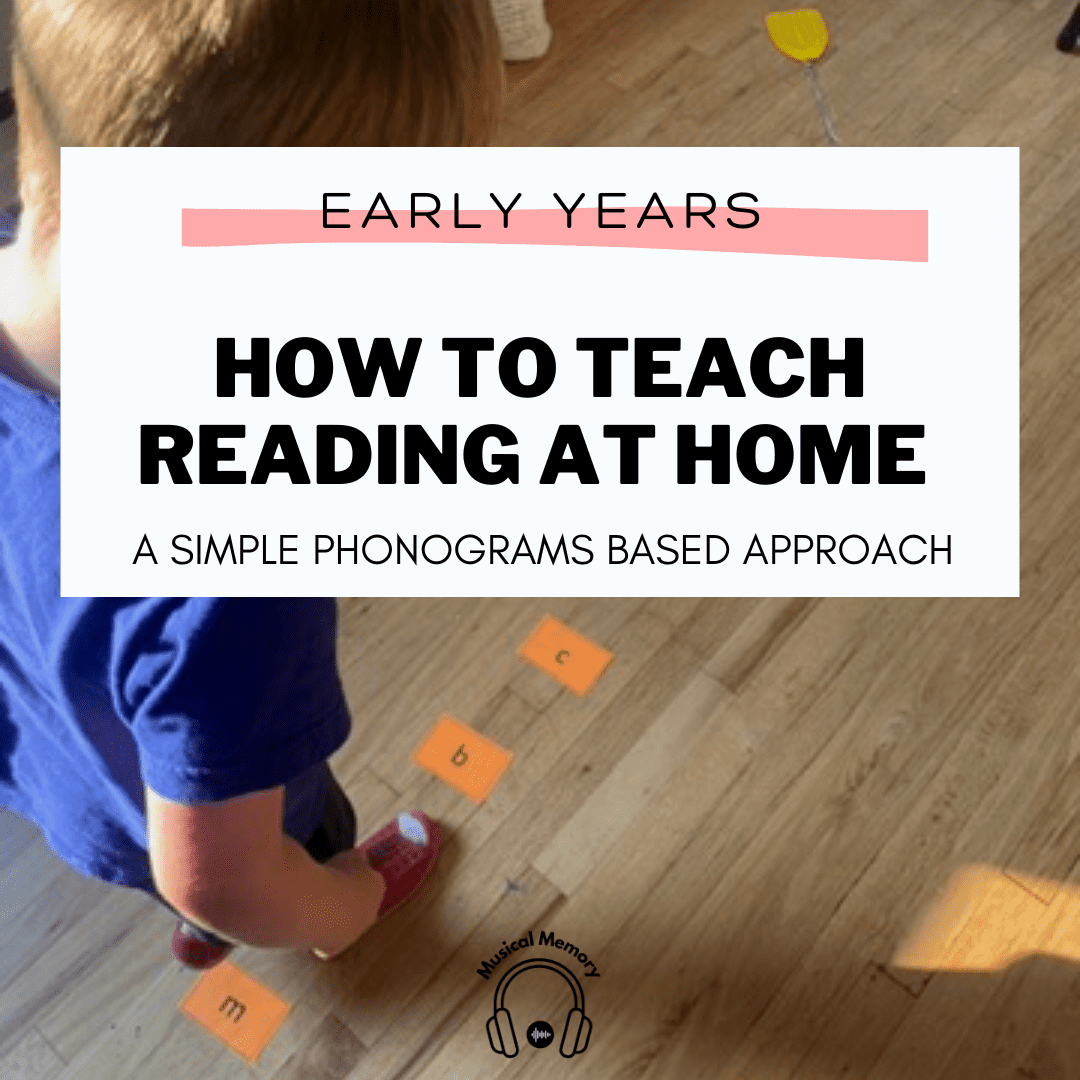Once your child has learned the first 26 basic phonograms, he or she is likely ready to start reading or spelling.
You can totally use a done-for-you curriculum, but I’ve found it’s actually easier to start with teaching phonograms and a couple simple activities at home. Once your child has the basics, you can dive into something more structured if you want.
This relaxed approach keeps reading time fun, helps young readers & early readers work at their own pace and not get bogged down by the more intensive all-in-one programs geared towards older children.
While I have friends that love and use All About Reading, and Logic of English, I’ve tried them all and have always just ended up using the principles I learned from programs like that to just teach reading one-on-one and tailor my instruction to the child’s learning.
Steps to Starting Reading at Home
- Understand reading readiness & whether your child is ready to start the process.
- Start teaching first 26 phonograms.
- After 10-15 phonograms are learned, you can start demonstrating blending activities below & playing “say it slow” game below.
- Child masters 26 phonograms.
- Begin building words every day (mainly three-letter words) and start a word notebook. Some of these words can be sight words that don’t follow the easy to sound out phonics rules. Get some early reader books to read too.
- Keep practicing reading every day. Get lots of early reader books and picture books from your local library to work with. TIP – I like the All About Reading Leveled Readers for daily practice, but I don’t use their full curriculum. Child and parent alternate reading sentences, paragraphs, etc.
- Read great books aloud to your child! One of the most important parts about learning to read is to just enjoy reading together. Don’t turn the story into a phonics lesson or make your child do the work. Just read to them and enjoy it. Here are 20 of our favorite picture books that rhyme & play with words in fun ways.
Which is what I’m going to explain in this post.
Quick Note about Phonograms
You can start the activities below while the child is still learning the phonogram sounds (after they’ve learned at least 10-15), but expect more progress & true understanding after the child has mastered the first 26 common phonograms.
Phonograms are similar to letter sounds, but teaching phonograms includes teaching all the sounds that a letter makes. For example, a has 3 sounds, as in apple, babe, and wall. If you want to learn more about phonograms, read this guide about how to teach phonograms first.
Build Words – Parent Demonstrates Sounds & Blending
Lay out 3 phonogram cards that spell a word. Say one of the sounds and have your child tap the sound you say.
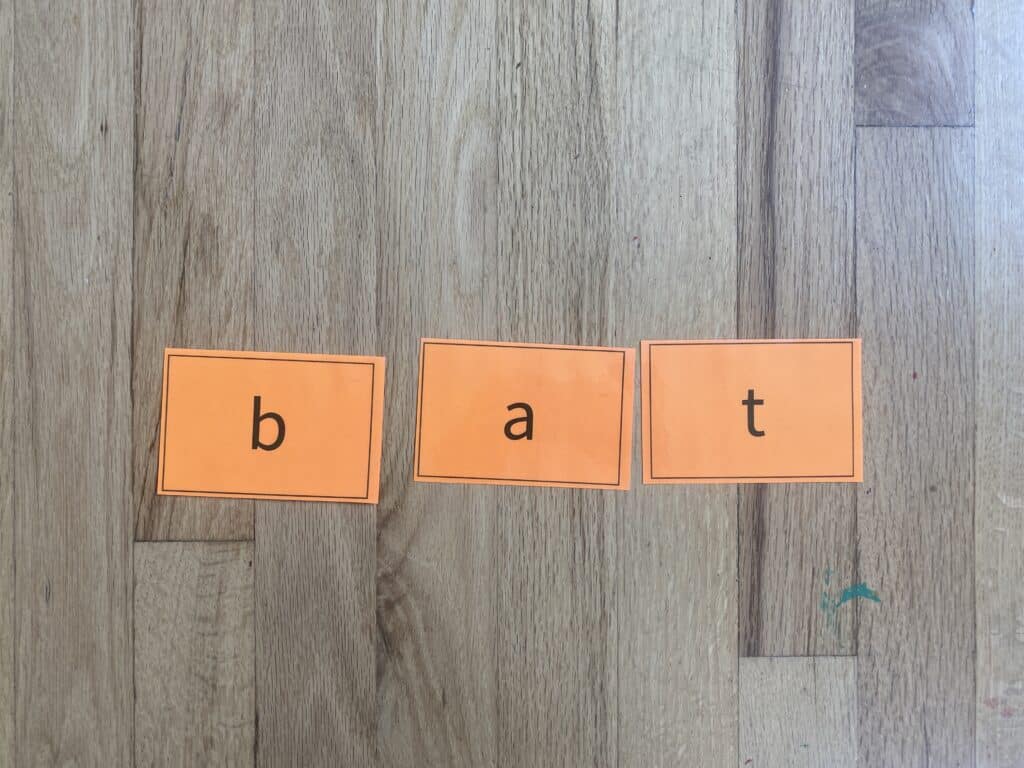
Then, say the sounds in a slow way, so that they’re all blended together… baaaaaaat. See if your child can hear what word you just said. (BAT!) If they can do it, switch out the b for other sounds that will make more at family words.
Play Say it Slow & Fast
It’s all explained in this other post.
Introduce the Idea of Making Words from Sounds
Do NOT do this until your child knows the first 26 phonograms!! You could maybe start after the child knows 10-15, but most kids will learn to sound out words more easily AFTER the first 26 phonograms are learned pretty well.
This is called “spelling to read.” Reading instruction is usually taught by – looking at a word, saying the sounds, and then blending them together to read the word.
I did that with my first two kids and it eventually worked. BUT, for our 3rd and 4th children, I switched to “spelling to read” after reading about the method, and oh my goodness… it works really well!!
Say a word, such as “hat.” Have the child say it after you. Then slow it down and say it really slowly, emphasizing all the sounds… hhhhaaaaaat. Then, break the word apart and show the sounds on your fingers, one finger for each sound that you say.
Then, have the child write the sounds on a white board, or build the sounds with alphabet manipulative. Writing is preferred if it’s not too overwhelming for your child to form the letters.
Once they get all 3 letters down, they’ll likely excitedly read the word they just spelled. It might take them a while to spell the first word. That’s okay. You could just do a couple words the first time you do this.
Do this with several simple consonant-vowel-consonant words…. mop, mom, dad, if, and, on, in, anything that rhymes with hat, ham, mom, etc.
If they seem totally lost and confused, they’re probably not ready, and that’s okay! Try again a month.
Change the initial sound game!
- Hat
- Bat
- Fat
- Mat
- Sat – your child will likely use the /s/ sound for s instinctively, but since s has 2 sounds, you might need to give the hint: “here we use /s/.”
- Cat – same for c – they might just read cat correctly, instinctively using the /k/ sound. If they try to use the /s/ sound for c, say “here we use the /k/ for the c.
When you’re doing this game, just say the short vowel sounds of the letter. Kids can learn to recite the 3 sounds of /a/ in practice and then read short /a/ when they first start reading. Later, you’ll introduce a word where /a/ is a long vowel sound and they’ll start to intuit patterns between short & long vowel letter sounds.
- -ad… had, mad, dad, bad, sad, fad
- -op … top, hop, pop, cop, mop. Usually my kids come up with something silly like Nop or Zop in an effort to rhyme. We spell it out and laugh – “That’s silly! That’s not a real word but if it was, it would rhyme with top.”
- -ip … sip, zip, tip, lip
- -ed… bed, ned, ted, fed, wed
Start a Reading Notebook
Grab a brand new spiral notebook & call it your child’s special “reading notebook.” You or your child can fill it with words and phrases they can read.
Just add a few words each day… You don’t even need to organize the lists by sounds.
The child doesn’t need to write the words either. Young children who are eager to read may not be ready to write as quickly as they’re ready to read. Of course, if they’re eager to write, they may.
This notebook method is simple & kids love flipping through their notebook to practice.
You can also practice on mini dry erase boards. These are our most used school supply. You can write one word at a time for kids to sound out. It’s fun to make silly, simple sentences. “I am a cat.” “That cat is fat.” “I love mom.”
Building words is one of a few simple ways to get lots of practice without drudgery.
You can also add high-frequency sight words to your child’s list such as: was, like, I, good, etc. There are suggested word lists on this list of Dolch words.
Reading Tips for Phonics Lessons with Your Beginning Reader
- The most important thing about this process is that your child develops a love of reading. Your relationship is more important than the pace at which they learn. Go with your gut. If they don’t seem ready, don’t start. If they’re eager, and then all of the sudden after a couple months lose interest, that means it’s time to pause instruction & just practice what’s easy & keep it fun.
- Don’t worry about going in alphabetical order or about your child mastering letter names. It’ll sort itself out. Sounds are the most important.
- Make sure your child knows all 26 single letter phonograms and can identify most sounds in either capital letters or lowercase letters. You can teach phonograms from my complete printable phonogram kit. (It comes with a list of phonograms, no-prep games, flashcards, and printing practice for kids who are old enough to practice writing & tracing.)
- Try to practice most days, but also, don’t worry if you miss days… putting gaps between practice sessions is actually a great way to force the brain to recall the letter sounds, which further cements the knowledge into the brain anyway.
- You don’t need a lesson plan calendar, reading program, or complex reading strategies. Just keep working on practicing sounds, and building words. That amount of systematic instruction will go a long way.
- Also, don’t bother with reading comprehension or other fancy sounding literacy skills that classrooms in elementary schools use. Many of those materials are designed for large group instruction. All those extra reading skills come through simply reading aloud a lot to your kids. (This book explains that in more detail.)
- Have the child practice the written symbol if possible. You can use dry erase tracer sheets from our phonograms kit, a sand or flour tray, or whatever seems developmentally appropriate.
- Give new readers lots of time. It took most of my kids a couple years to become fluent readers. And even still, research shows it takes until about a 10th grade reading level for a person’s comprehension of the written word to catch up with what they could comprehend on audio. Raising a lifelong reader takes a long time. Don’t worry about the pace too much unless your momma gut tells you something is off.
- Which brings me to another tip – read good books to your kids out loud a LOT and have them memorize poetry and/or nursery rhymes. It’s the best way to get complex language stored into their brains… which helps them with learning to read in the long run.
- Consider alternating your phonogram practice with another language arts program just for fun. I’ve really loved doing The Good and the Beautiful Preschool Program with my youngest 4 year old. He wants that one-on-one lesson time like the big kids get, so this is perfect for that. And it has a great foundation for letter sounds. It only teaches short vowel sounds, which phonogram purists don’t like, but honestly, I’m okay with that. I actually just always say the phonogram sounds while we’re doing the lessons, and he doesn’t seem confused!
Best Alphabet Manipulatives
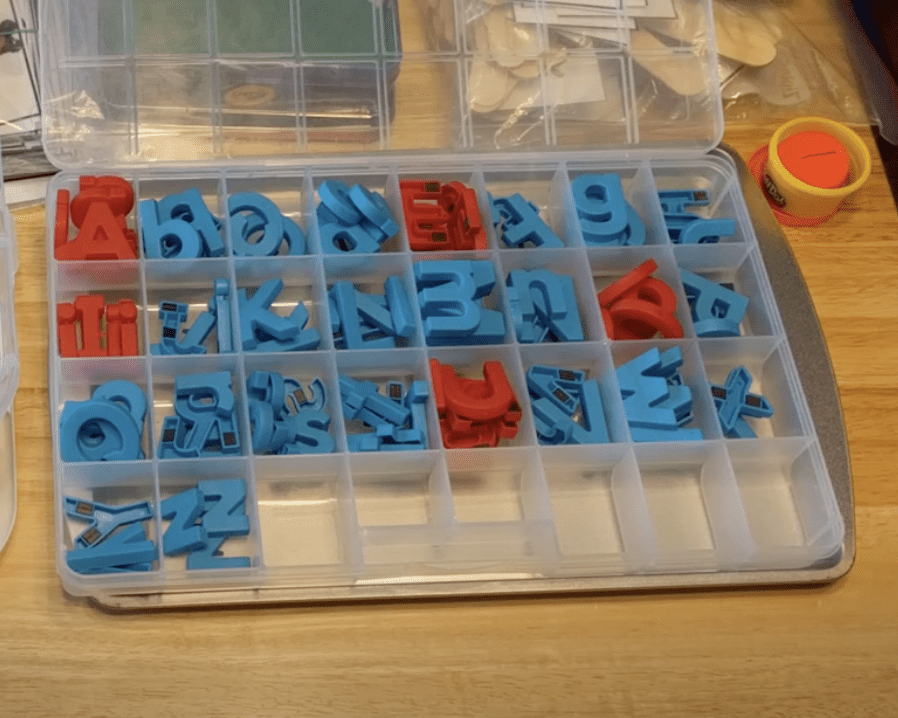
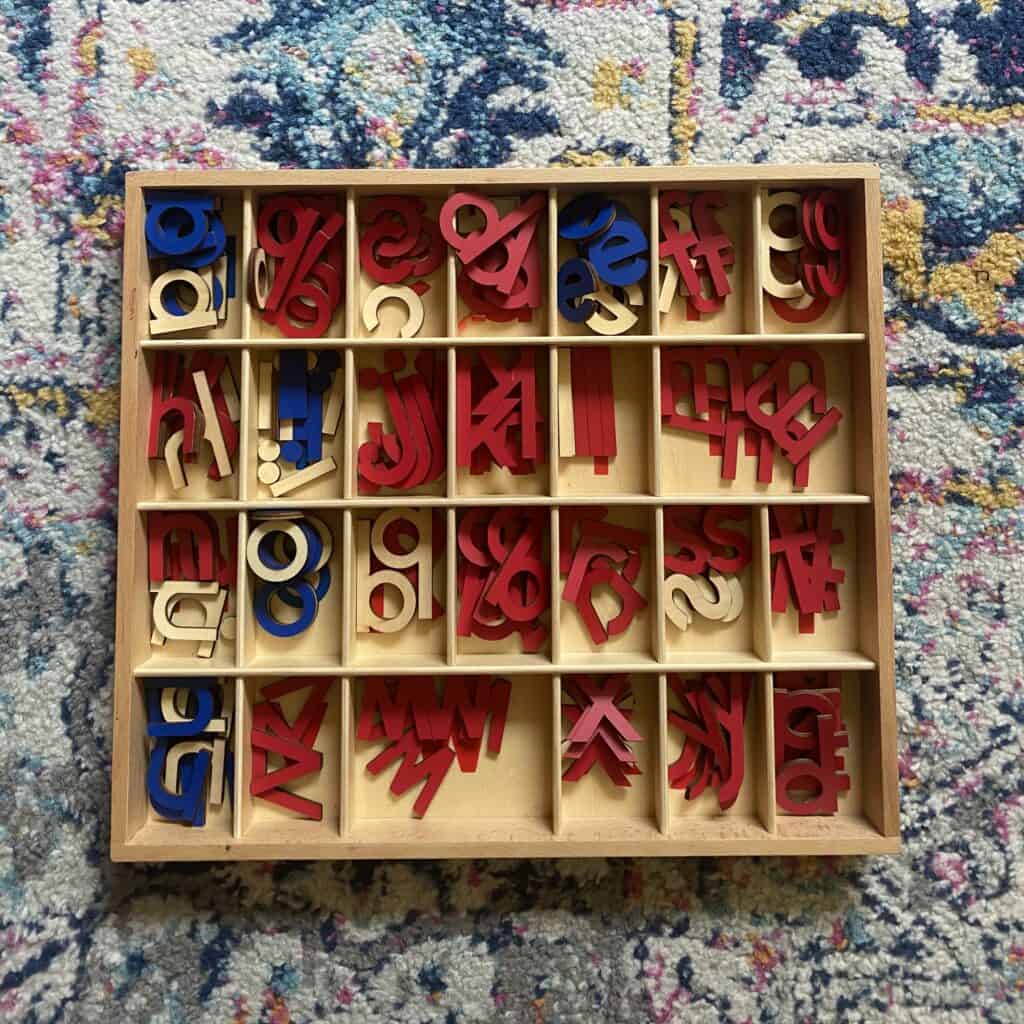
What Next?
At this point, you can get a formal reading curriculum or just keep on reading lots of books. With a beginning reader, I spend 10 minutes a day side by side, most days a week. Sometimes we do two 10-minute sessions in a day.
When we transition from building words to reading books, the child and I take turns reading aloud, alternating sentences until the child builds stamina and can alternate pages or paragraphs.
Continue with explicit phonics instruction until the first 75 phonograms are learned. Here are our favorite books for early readers linked on Amazon. (You’d be able to find many of these at your library.)
The BOB books are perfect for younger children (4-6 years old) who are just getting started. If you have a child who is reading in first grade or second grade, I’d recommend Frog & Toad or any of the Cynthia Rylant series. National Geographic and DK Readers have nonfiction books for early readers that my kids have enjoyed too.
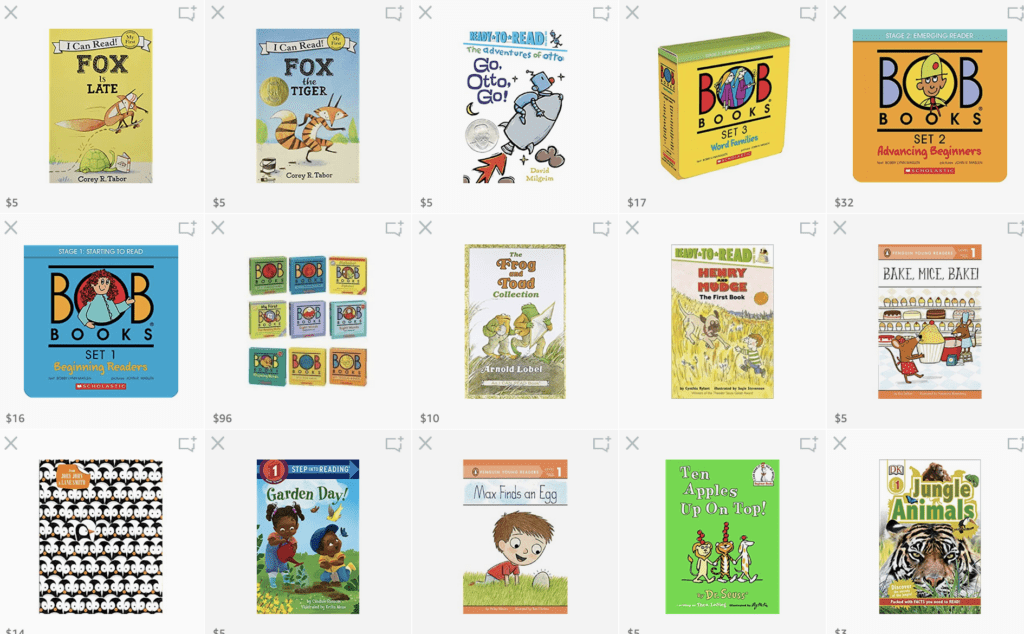
I also really like The Good and the Beautiful Language Arts for teaching reading. Their free assessment will help you determine whether your child should be placed in Kindergarten Prep, Kindergarten Language Arts or 1st Grade Language Arts. You can download the program for free & try it out before purchasing too.
The English language gets a bad rap for its complexity, but at the end of the day, a phonogram or phonics based approach has an extremely high success rate. There are volumes of research over the last several decades done on the benefits of learning to read from a phonogram-based program. Whether you start when the child is in preschool, kindergarten, or in first grade, teaching with phonograms from the early years is the way to go.
Related: How Many Hours a Day to Spend Homeschooling


